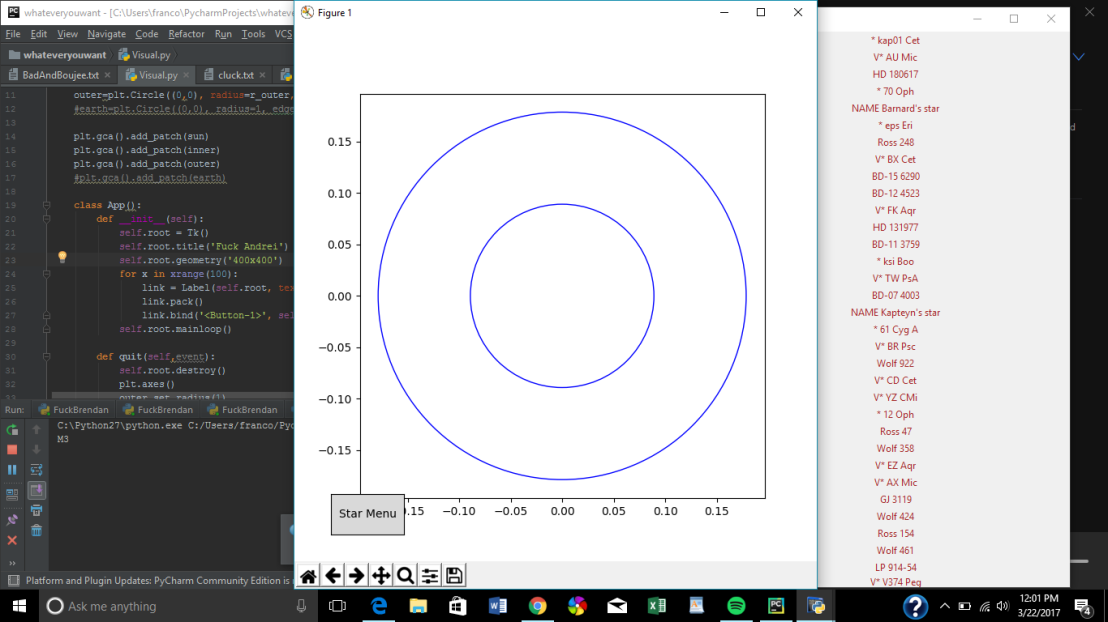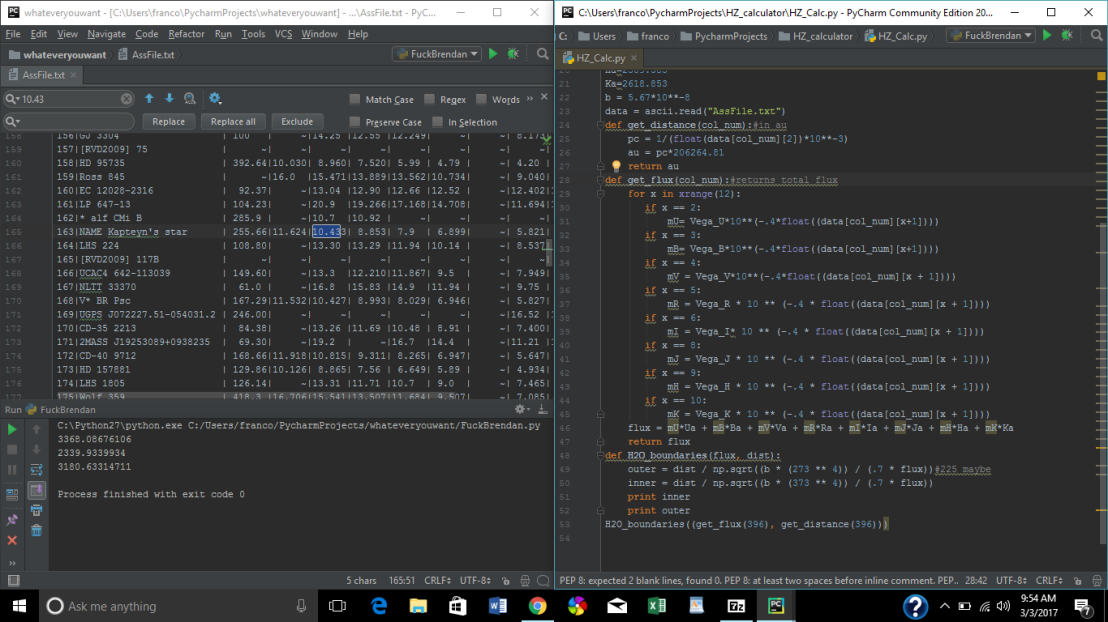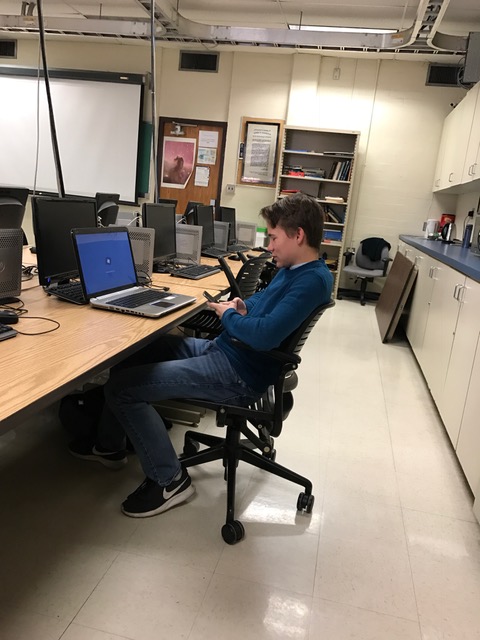After a few weeks with no updates, I decided to finally post. During this time, we finally got our model approved and we started modifying our visual so that the user can actually understand the meaning of the numbers that come out. So far, our visual is just a circular display of orbits and a list containing all of the stars we have worked on. 
Author: Andrei D.
Week 3
This week we created two new programs, one of which calculates the total stellar flux by sorting through a list of stars and their data. This program also lets us calculate at what distance surrounding a star would a planet be in the liquid water habitable zone. Our second program is the starting point of our newest model, which is getting the temperature of a star based solely on two data point, the B and the V stellar flux filters. 
Week 2
After being gone all week, I came back to see that Brendan had revised our previous models and we started working on models based on stellar flux. Flux density is the amount of energy per area coming from the star. We are using this model because we can accurately determine the flux of each star, which makes it easier for us to calculate the temperatures for regions around them. 
First Update
After about a week of work, we have all accommodated to our individual responsibilities. Brendan tirelessly searches through papers and tries his best to find different models of habitable zones around stars, while I implement these models and make programs that will make it easier for us to get the results. Kumai, well we still don’t really know what he’s doing. He’s doing his own thing.
Brendan and I have completely modeled the Liquid defined habitable zone, and have begun to work on the Ultra-Violet and Tidal defined habitable zones. Our current program works by cross referencing the identifier of any given star with a database to find its spectral type. We then use the spectral type to find temperature and luminosity to plug into our model and we get a radius as our output. 
Habitable Regions Surrounding Stars
In this project, I will be using NASA’s databases in order to find the stars closest to our solar system and the planets surrounding them. I will also determine if the planets around them could sustain life based on their temperatures, atmospheres, and other key factors.
